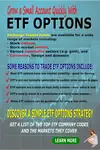Search Options Trading Mastery:
- Home
- Covered Calls
- Covered Calls and Naked Puts
Covered Calls and Naked Puts
Double Discount Your Stock Purchases with Covered Calls and Naked Puts
Some have asked whether a covered calls and naked puts combination is an option trading strategy worth considering. The best way to answer that is, that it depends how you choose to do it.
So that we understand our terms, the reason why they are called "naked" put options is because you are giving someone the right to "put" their shares to you at an agreed price, up to an agreed expiration date. This effectively "exposes" you to the caprice of market price action without that exposure being hedged, or "covered" by an opposite position.
There is a profitable, low risk way to do naked puts, that we have covered at the page entitled "Using Options to Buy Stocks". The basic idea outlined there, is that when you believe a stock is due for a reversal from its present downward price movement, you sell "naked" put options at the strike price for which you are prepared to purchase multiples of 100 shares of the stock.
Reasons for believing this might include:
- Because the market price is not far from a strong price support area (another subject in itself - the realm of technical analysis)
- Or because you are bottom fishing stocks.
- Or maybe there is an upcoming dividend and you believe that the price action will run up as the ex-dividend date approaches because people are buying the stock to get the dividend.
In return, you will receive a credit to your account for the short put option premium. You effectively get paid to wait for the price to fall to your preferred purchase level.
So immediately, you have already lowered the effective cost of the shares that you intend to purchase. If you're buying the shares for the upcoming dividend and you choose an "at the money" strike price for selling the put options, then if you end up owning the shares, you will more than likely about double the income that you would've ordinarily received.
You need to get your timing right to own the shares though. Choose options that expire about one week before the ex-dividend date because that's when they will be exercised. With "weekly options" this is much easier to do than it used to be.
If the price of the underlying continues to fall to the anticipated support level by expiration date, you will most likely be exercised and the underlying shares will be yours.
Providing the underlying stock price has not fallen too far below the short put strike price, you then immediately sell call options at a strike price above your purchase price for further income.
If the underlying does NOT fall to the anticipated price level, you simply keep the put option premium at expiration date and move on.
Using this covered calls and naked puts strategy, you not only receive an income but this double income from naked puts followed by covered calls, (and maybe even from the dividend) offsets your overall cost of holding the shares once they are assigned to you.
With some imagination, instead of just selling naked puts to begin with, you could also protect yourself by entering a put credit spread at the price level you are prepared to own the stocks.
The way-out-of-the-money bought put would cost you a relatively insignificant sum but also provide some protection should the underlying price fall sharply.
For more information, including worked examples, we refer you to Using Options to Buy Stocks at a Discount.
Covered Calls and Naked Puts - Same Risk Graph
Another way to look at covered calls and naked puts is by viewing them as two separate and independent option trading strategies.
If you have access to some software, or a broker platform that provides risk graphs, you will find that the covered calls payoff diagram looks exactly the same as for the naked put.
In other words, if you purchased stocks and then wrote call options above them, then analyzed the risk graph, you would find limited upside profit potential and "almost" unlimited downside loss potential (stock prices can't fall below zero) should the underlying stock price crash big time.
Now you do the same thing, only with a "naked put" strategy. By simply selling put options "naked" then viewing the risk graph, you will find exactly the same result - limited profit (the premium received) and unlimited loss should the stock continue to fall. This is one reason why "bottom fishing" is a relatively safe approach.
Our conclusion therefore is, that when the above is taken into account, the standard buy/write or covered call strategy may not be the most effective use of your capital. The only advantage of covered calls over naked puts is that you can choose to keep the shares until the price recovers (if it does).
There are however, more advanced covered call strategies which are outlined elsewhere on this site, designed to minimize your risk and change the graph.
Using it as a Range Trading Strategy
There is also a less desirable, more risky, way to employ the covered calls and naked puts trade.
Let's explore another possible covered calls and naked puts scenario.
Imagine a company, let's call it XYZ, is currently trading at $20 and you believe it is due for a rise in the next month or so. So you do the following:
- Purchase 100 shares XYZ at $20 per share.
- Sell $22.50 XYZ call options with expiration date next month out and receive $1.50 premium [this part is your normal covered call]
- Simultaneously sell (short) $17.50 put options and receive a further premium of $1.50. You would need enough collateral in your brokerage account to cover the additional purchase of the equivalent number of XYZ shares in your option contract at $17.50 each.
Analysis of Covered Calls and Naked Puts position:
You have now taken in $3 in options premium to offset the cost of your $20 purchase price on XYZ shares, bringing their effective cost down to $17 per share.
You are also now obligated to sell these shares at a maximum price of $22.50 should the market price rise above that amount at expiration date.
You are also obligated to purchase a second lot of 100 shares at $17.50 at expiration date, should the market price of the stock fall below that level.
As long as the stock price remains somewhere between $17.50 and $22.50 at option expiration date, you get to keep all the premium you have taken in and since $3 is more than the maximum $2.50 loss on the shares, you make an overall profit as well.
But say the price action on XYZ becomes volatile and the price moves sharply either way?
The bottom line is, that if it goes north, you make even more profit, but if it tanks below $17 then you won't be so happy.
Here's why:
Scenario 1:
The stock price rises sharply and at option expiration date, is trading at $25.
At this price, your call options will likely be exercised and you will be forced to sell your shares for $22.50.
So you make a further $2.50 profit from selling the stock and all positions are closed, leaving you with a total profit of
- $3.00 from call and put option premiums
- $2.50 from selling the XYZ shares
- $5.50 per share total profit on the deal.
Nice! Mind you, at $25.00 this is only $0.50 per share more than if you had just bought the shares without selling the options, BUT if XYZ had only risen to $22.50 at expiration date then you would still make $5.50 overall profit instead of $2.50 from buying the shares alone.
Scenario 2:
But if XYZ plummets to $15 what are we looking at then? It's times like this that we are faced with the stark reality of what "naked' really means when it comes to selling options.
At $15 market price, your account would look like this:
- There would be a $5 unrealized capital loss on your first XYZ share purchase (at $20/share)
- You would also be forced to purchase a FURTHER 100 XYZ shares for $17.50 when you could have bought them on the open market for only $15 - an immediate $2.50 unrealized loss on purchase (you never actually realize a loss until you sell the shares).
- Your overall 200 shares have cost you an average $18.75 per share (($20 x 100) + ($17.50 x 100) / 2) when market price is only $15.00.
- But this is offset by the $3.00 option premiums you received from shorting the calls and puts.
- So your overall net unrealized loss at options expiration date is $0.75 per share ($18.75 - $15.00 + $3.00).
Covered Calls and Naked Puts Breakeven
Your breakeven level at options expiration date is $17.25
- $2.75 loss on your 100 x $20 shares (20 - 17.25)
- 25 cents loss on 100 x $17.50 shares (17.50 - 17.25)
- Equals $3.00
- Less $3.00 option premiums received.
Below this level, you start to make a loss.
If market price reaches the above breakeven point before expiration date and doesn't look like rebounding, you could offset any further losses by
- Buying back the 'sold' now way-out-of-the-money $22.50 call option for a few cents and then
- Selling $20 call options for another $1.50 premium - say an overall gain of $1.25.
Or if you want to go a further month out you might get around $2.00 per share.
You could also choose at this point to 'cover' your naked put by now purchasing (going long) an 'out-of-the-money' put, say at $15 strike price, for about $1.25 (depending on how many days to expiry now).
It would not prevent further losses on the shares you already own should the price fall further. But it would limit losses on the additional shares you would have to purchase, to $2.50 per share, if your short puts were exercised.

You now have received $3 from your original options to offset losses on your original shares, plus a further potential maximum loss of $2.50 per share on any additional shares you might have to purchase at $17.50.
At expiration date you now have a potential maximum profit should the stock turn around, of $5.50 per share, unlimited losses on your original shares plus a further $2.50 maximum loss on your $17.50 shares.
So to summarize, you could say that a covered call and naked put option trading strategy is to some extent a range trading strategy. If the stock breaks out on the upside, you're looking good and don't care how far it goes as you still make a good profit.
But if it breaks to the downside, you're exposed all the way to a maximum potential of zero stock price. But remember, on purchased shares, you only ever realize a loss when you sell them. You could choose to hold until they return to a better level, but do you want to tie up your capital for that long?
There are better and safer covered call strategies available than 'covered calls and naked puts' spreads. To view them ...
**************** ****************
Return to Covered Calls Contents Page
Go to Option Trading Homepage














New! Comments
Have your say about what you just read! Leave me a comment in the box below.